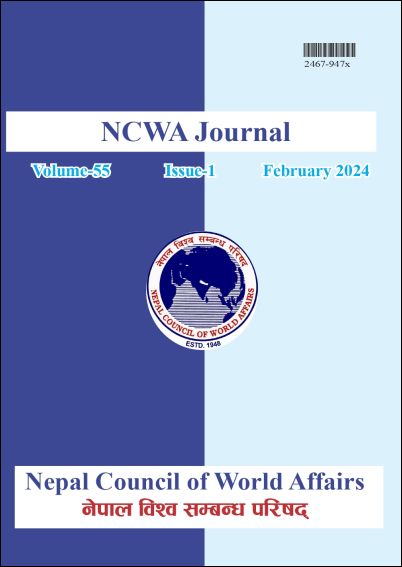Foreign Aid and Agricultural Development in Nepal
DOI:
https://doi.org/10.3126/ncwaj.v55i01.63059Keywords:
Development, Import, Foreign Aid, AgricultureAbstract
The history of foreign aid for agricultural development began in 1951 under the Point Four Program of the United States to strengthen Nepal’s democratization process and human resources development. Answering the questions related to the trend of foreign aid inflow, its impact on the development of the agricultural sector and the contribution of the agricultural sector to Gross Domestic Product make the theoretical framework of the paper. Secondary data analysis was the method employed to seek the answers. The results suggest that the per capita total outstanding debt was NPR 50,000 in FY 2076/77 BS, foreign aid and its disbursement increased over the period of 5 years, but its functional use in the agricultural sector had declined sharply to 1.1% at the end of the five years. The agricultural sector had the lion’s share of 25.12% of total GDP in 2076/77 BS. The production status of rice and other cereals has increased slightly but not significantly. However, rice import has increased sharply (788,492 mt) at the end of FY 2076/77 BS, i.e., 36.6 times more than the 22,802 mt at the beginning of FY 2072/73 BS. Even then data shows a positive relationship between the inflow of foreign aid and the development of agriculture in Nepal, foreign aid is inversely related to the import of rice during the time of the studied period.




